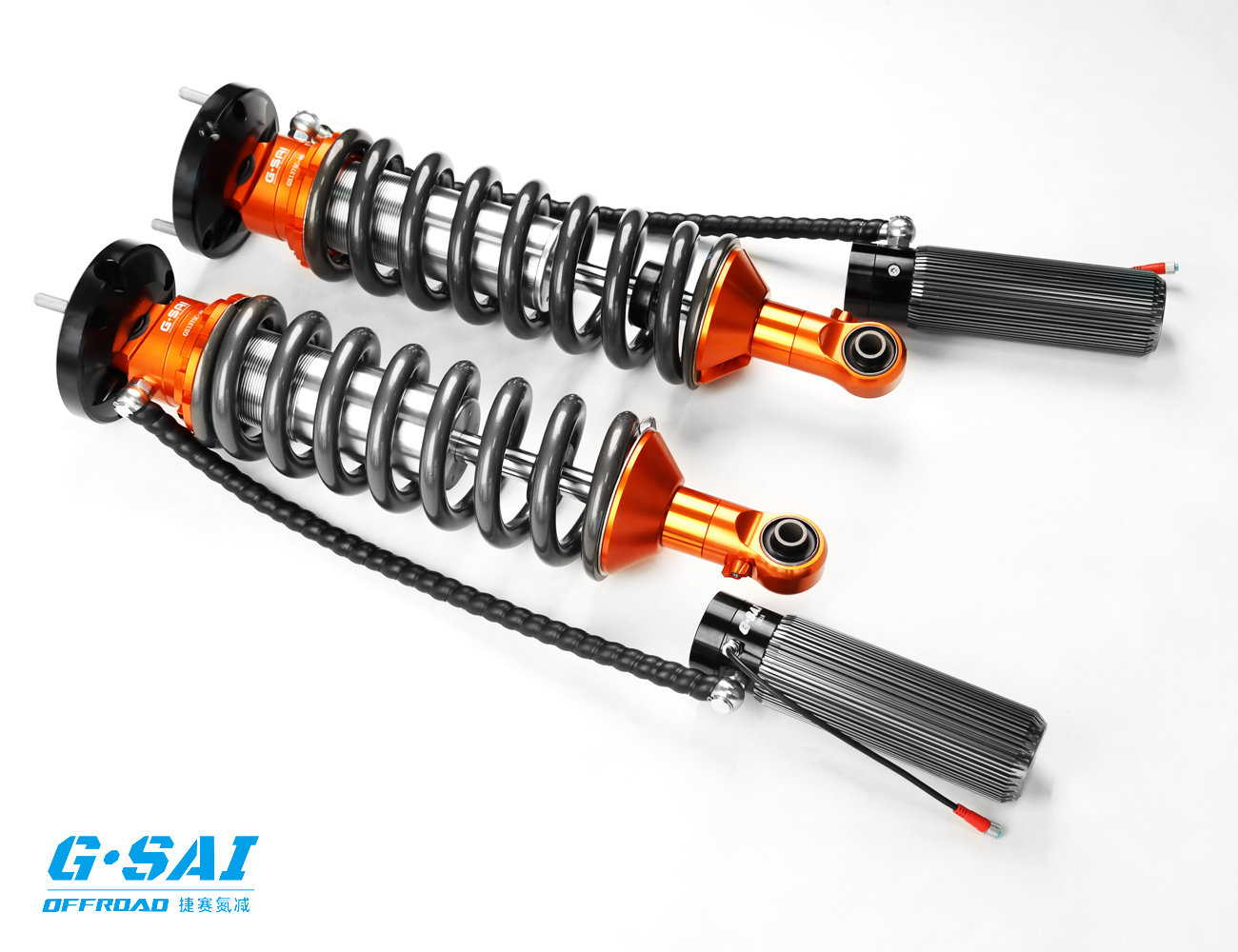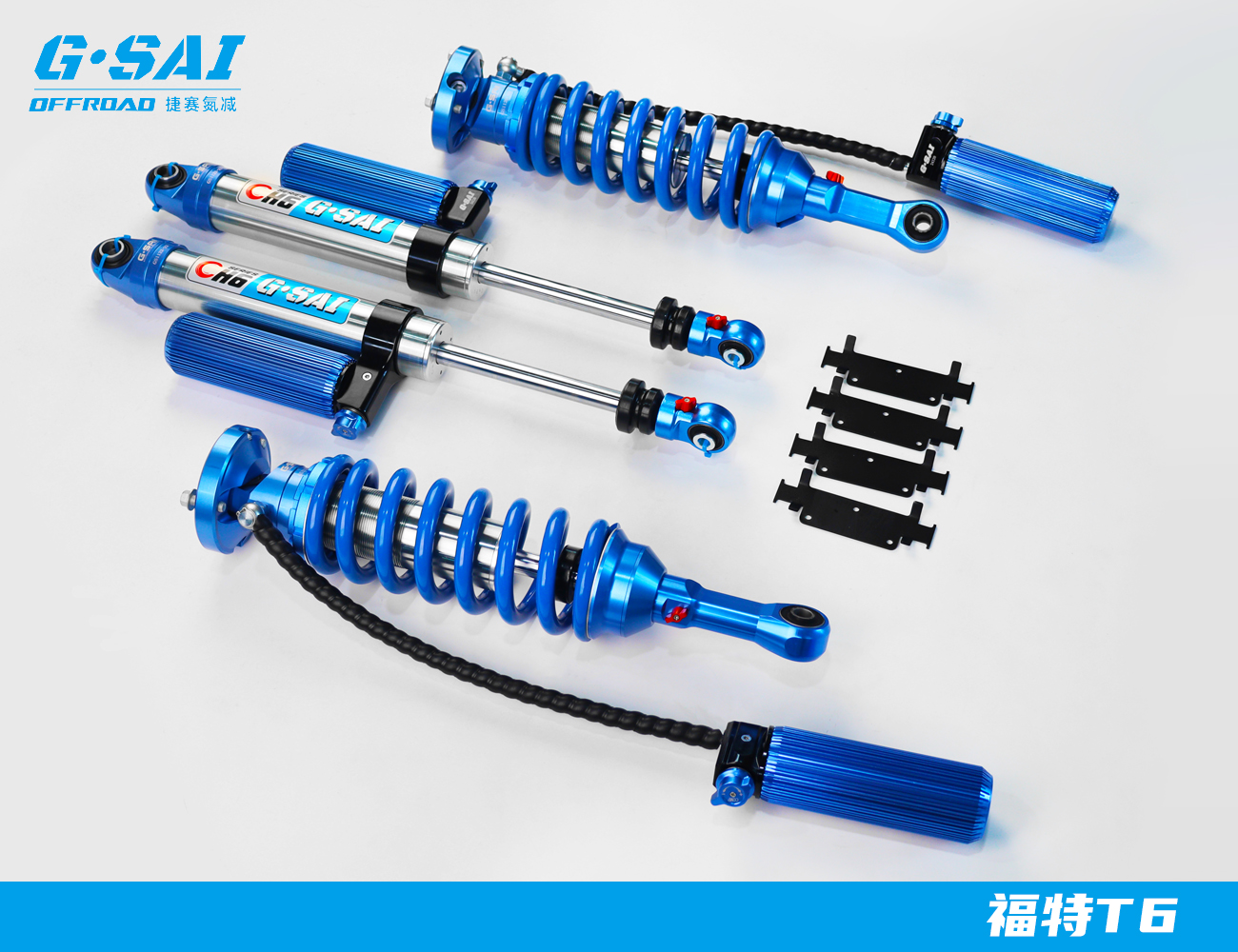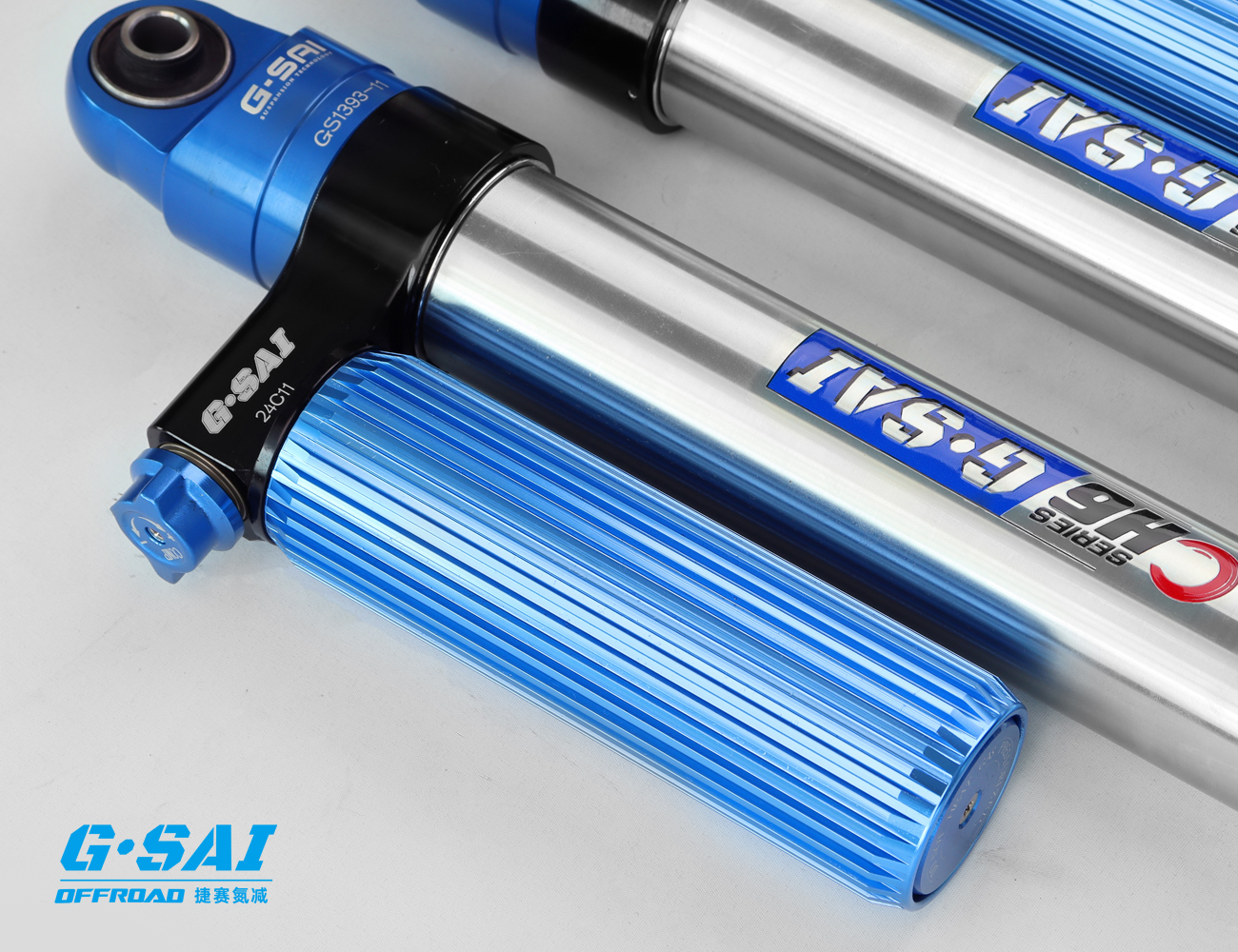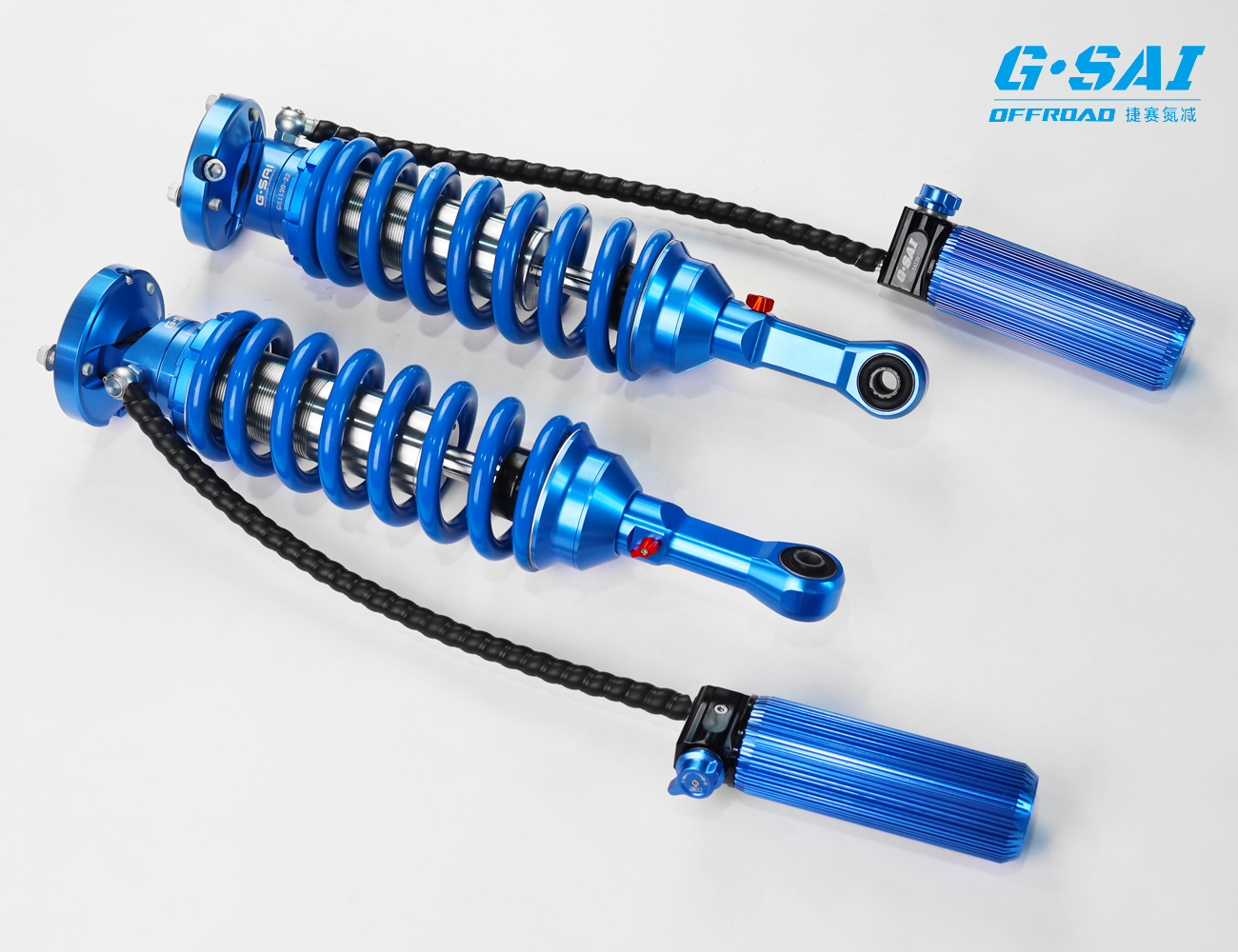How Do Adjustable Shocks Work? A Complete Guide for Off-Road and Performance Vehicle Suppliers
August 19, 2025
Share This Article
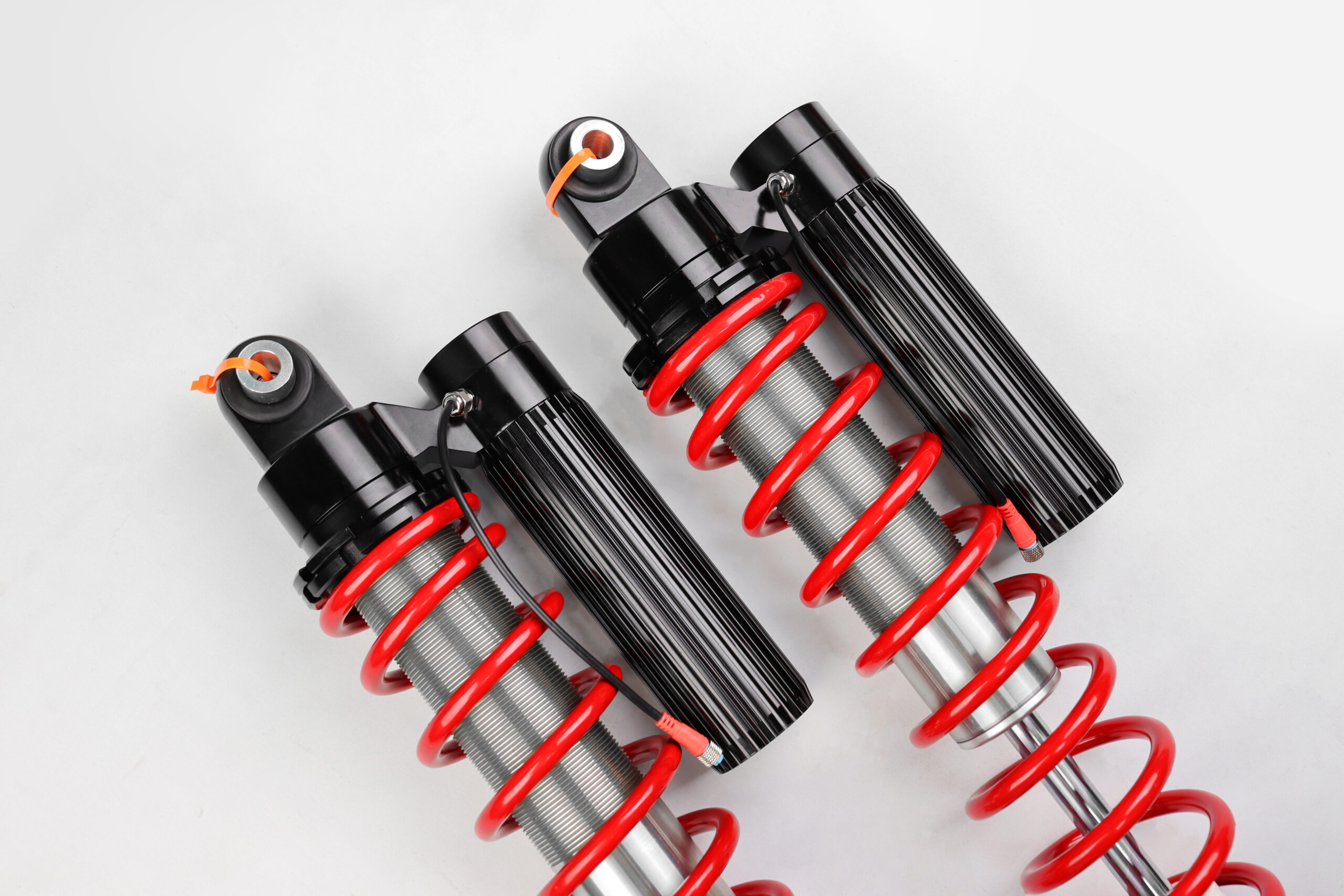
What Are Adjustable Shock Absorbers?
Adjustable shock absorbers are a specialized type of vehicle suspension component designed to allow users—or automated systems—to manually or electronically customize the damping characteristics of the shock. These shocks are particularly critical in high-performance, off-road, and racing environments where precision handling, ride height control, and terrain adaptability are essential.
For B2B buyers, such as auto parts wholesalers, performance part dealers, and OEM brands, adjustable shocks offer a high-margin product line with growing demand among modified car enthusiasts, off-road teams, and tuning workshops.
Key Features of Adjustable Shocks
| Feature | Description |
|---|---|
| Damping Control | Ability to adjust compression and rebound damping independently |
| Ride Comfort | Enhanced control over vehicle comfort and handling |
| Load Adaptability | Adjusts to different vehicle weights and driving conditions |
| Terrain Flexibility | Ideal for off-road, racing, and urban terrain switching |
| Heat Dissipation | High-performance materials manage heat during intense driving |
How Do They Work?
Adjustable shocks control the movement of a vehicle’s suspension by regulating the flow of hydraulic fluid through internal valving. By modifying the resistance in these valves, users can “stiffen” or “soften” how the shock responds to road conditions. This is done via:
- Manual knobs or screws on the shock body
- Electronically-controlled solenoids
- Pneumatic or hydraulic remote systems
G·SAI, a leading manufacturer of high-performance adjustable shock absorbers, uses precision CNC-machined components and simulation-tested designs to offer extreme adaptability and durability—making them a top choice for race teams and wholesale distributors worldwide. Learn more about G·SAI’s shock absorber products.
Applications of Adjustable Shocks in Off-Road and Racing Vehicles
Adjustable shock absorbers are not just upgrades—they are essential components in numerous applications where performance and safety are paramount. For wholesale buyers and suppliers, understanding these use cases helps identify key market segments and tailor inventory accordingly.
Core Markets for Adjustable Shocks
| Application Area | Description | Target Buyer |
|---|---|---|
| Off-Road Racing | Used in Baja, Dakar, and desert racing | Racing teams, off-road part dealers |
| Rock Crawling | Enhances vertical articulation and wheel grip | 4×4 shops, off-road accessory retailers |
| Rally Racing | Adapts quickly to gravel, snow, or tarmac | Rally teams, motorsport suppliers |
| Modified Trucks and SUVs | For show, towing, and trail versatility | Custom shops, truck modification brands |
| Performance Cars | Street-legal vehicles needing track performance | Tuning stores, performance garages |
| Recreational Vehicles (RVs) | Improves stability and ride comfort | RV manufacturers, RV parts wholesalers |
Business Benefits for Distributors and OEMs
- Higher Average Order Value: Adjustable shocks have a premium price point
- Cross-Sell Opportunities: Often purchased alongside springs, control arms, and lift kits
- Customization Demand: Popular in the private label and custom vehicle market
- Repeat Business: Customers often return to upgrade or replace components
Industry Trends Driving Demand
- Rising popularity of overlanding and off-road motorsports
- Expansion of vehicle personalization culture globally
- OEMs seeking high-performance aftermarket partnerships
- Demand for adjustable solutions in electric and hybrid vehicle platforms
By partnering with a supplier like G·SAI, which offers bespoke solutions and rapid production cycles, distributors can meet growing demand with a reliable, performance-proven product line. Explore G·SAI’s global dealer network.
Types of Adjustable Shocks: Manual, Electronic, and Automatic
Understanding the different types of adjustable shocks is essential for B2B buyers to match specific product lines with their market segments. Each type offers distinct advantages in cost, performance, and integration.
1. Manual Adjustable Shocks
These use external knobs or screws to adjust damping. They are cost-effective and reliable, ideal for:
- DIY enthusiasts
- Custom car builders
- Entry-level off-road racers
Pros:
- Low to medium cost
- Easy to install and adjust
- No electronic components to fail
Cons:
- Not adjustable on-the-fly
- Requires physical access to the shock
2. Electronically Adjustable Shocks
Integrated with electronic control units (ECUs) that adjust damping in real-time based on driving conditions or preset modes.
- Used in high-end sports cars and advanced off-road vehicles
- Ideal for luxury and performance OEMs
Pros:
- Real-time adjustment
- Smoother ride quality
- Integrated with vehicle systems
Cons:
- Higher cost
- More complex installation
- Requires compatible vehicle electronics
3. Automatically Adjustable Shocks (Semi-Active or Active)
Use sensors and actuators to continuously monitor and adjust damping without user input.
- Found in smart suspension systems
- Suitable for fleet vehicles, luxury SUVs, and electric vehicles
Pros:
- Best handling and comfort
- High-end market appeal
- Fully automated performance
Cons:
- High cost
- Limited aftermarket compatibility
| Shock Type | Adjustment Method | Cost Level | Ideal Use Case |
|---|---|---|---|
| Manual | Knobs/screws | Low-Mid | Custom builds, off-road rigs |
| Electronic | ECU/remote | Mid-High | Racing, luxury OEMs |
| Automatic | Sensor-based | High | Fleet, EVs, luxury SUVs |
G·SAI offers fully customizable solutions across all three types, tailored to specific vehicle platforms and racing requirements. Their in-house CNC workshop and simulation lab ensure precise performance and fast turnaround for private label clients. Contact G·SAI for OEM and wholesale inquiries.
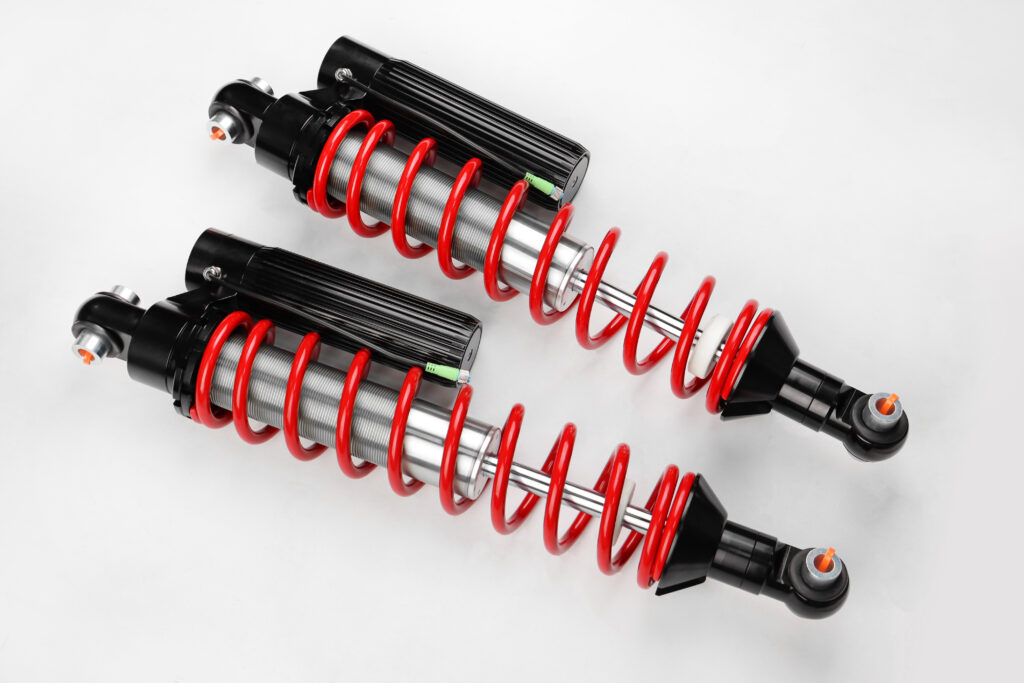
Adjustable Shocks vs. Standard Shocks: What B2B Buyers Should Know
For wholesalers, OEM brands, and performance parts dealers, understanding the difference between adjustable shocks and standard (non-adjustable) shocks is crucial when selecting the right inventory for different market segments. Adjustable shocks offer significantly more value and flexibility, making them a premium upgrade ideal for multiple B2B applications.
Key Differences Between Adjustable and Standard Shocks
| Feature | Adjustable Shocks | Standard Shocks |
|---|---|---|
| Damping Control | User or system-adjustable | Fixed factory settings |
| Performance Tuning | Tunable for terrain, load, and driving style | Limited to average driving conditions |
| Versatility | Suited for multiple applications (off-road, racing, towing) | Designed for general use |
| Cost | Medium to high | Low to medium |
| Target Market | Enthusiasts, racers, OEMs, custom builders | Mass-market consumers |
| Resale Value | Higher due to upgrade potential | Lower resale value |
Why Adjustable Shocks Are Better for B2B Sales Channels
- Higher Margins: Adjustable shocks command a premium due to their technology and performance.
- Broader Market Appeal: From off-road enthusiasts to RV manufacturers, the applications are vast.
- Brand Differentiation: Offering adjustable shocks helps distributors position themselves as high-performance specialists.
- Customization Opportunities: Adjustable shocks can be tuned or branded for private label programs.
Use-Case Comparison
| Use Case | Recommended Shock Type |
|---|---|
| Stock Replacement | Standard Shocks |
| Off-Road Racing | Adjustable Shocks |
| Track-Day Performance | Adjustable Shocks |
| RV or Camper Van Stability | Adjustable Shocks |
| Fleet Vehicles | Standard or Automatic Adjustable Shocks |
For example, G·SAI’s racing and RV shock absorbers are custom-engineered for both high-intensity use and comfort, offering unmatched adaptability for wholesale buyers targeting niche markets. With 17 years of R&D experience, G·SAI provides a competitive edge in both product quality and customization. Discover G·SAI’s story and engineering excellence.
How to Assemble and Tune Adjustable Shock Absorbers
Understanding the assembly and tuning process is essential for distributors and OEMs who offer installation services or support private label customization. Proper assembly ensures shock performance, while tuning allows precise adaptation to vehicle dynamics and road conditions.
Assembly Steps for Adjustable Shocks
- Pre-Inspection
- Check all components for defects or shipping damage.
- Verify part number and application match.
- Mounting Hardware Installation
- Install bushings, spacers, and washers as specified.
- Use torque specs based on vehicle manufacturer guidelines.
- Shock Mounting
- Bolt the shock to the lower and upper mounts.
- Ensure the shaft is not overextended during installation.
- Hydraulic Priming (if required)
- Cycle the shock manually to eliminate air pockets.
- This is especially important for reservoir shocks.
- Secure Adjustment Mechanisms
- Set adjuster knobs or dials to a neutral or mid-level setting.
- Ensure remote reservoirs and lines are properly routed.
Tuning Adjustable Shocks for Performance
Tuning involves modifying the compression and rebound characteristics to suit specific use cases.
Compression Damping:
- Controls the rate at which the shock compresses under load.
- Important for bump absorption and vehicle stability.
Rebound Damping:
- Controls the rate at which the shock extends after compression.
- Crucial for maintaining tire contact and reducing bounce.
| Vehicle Use | Compression Setting | Rebound Setting |
|---|---|---|
| Off-Road Racing | High | Medium |
| Daily Driving | Medium | Medium |
| Towing/Hauling | High | High |
| Track Racing | Medium-High | High |
| Rock Crawling | Low-Medium | Low |
Tools Required
- Spanner wrenches
- Torque wrench
- Shock dyno (for advanced tuning)
- Ride height tools
- On-vehicle test equipment (telemetry sensors for racing)
G·SAI’s adjustable shock systems are engineered for ease of installation and precision tuning. Their one-to-one after-sales service and training workshops ensure that distributors and racing teams can maximize performance and reliability. See how G·SAI supports its global partners.
Choosing the Right Adjustable Shocks for Your Product Line
When sourcing adjustable shocks for resale or OEM integration, it’s important to match the shock’s capabilities with your customer base’s needs. This ensures customer satisfaction and minimizes returns or warranty claims.
Factors to Consider When Choosing Adjustable Shocks
- Vehicle Application
- Off-road trucks, SUVs, RVs, UTVs, and race cars all have different damping needs.
- Choose shocks with appropriate stroke length, bore size, and mounting configuration.
- Market Segment
- Entry-level hobbyist? Go with manual adjustables.
- High-performance racing? Opt for remote reservoir systems or electronic adjustables.
- Terrain Type
- Sand, mud, rock, pavement, or mixed conditions?
- Load Capacity
- Shocks must handle the vehicle’s gross weight plus cargo or towing weight.
- Adjustment Range
- Wider adjustability provides more flexibility for tuning.
- Durability Requirements
- Consider corrosion resistance, rebuildable design, and impact resistance.
Recommended Product Matching Table
| Customer Type | Recommended Shock | Adjustment Type | Custom Needs |
|---|---|---|---|
| Off-Road Team | G·SAI Racing Shocks | Manual or Remote Reservoir | High travel, heat resistance |
| Auto Parts Dealer | G·SAI Adjustable Series | Manual | High volume, fast shipping |
| RV Manufacturer | G·SAI RV Shocks | Semi-Active (Optional) | Comfort, load adaptability |
| OEM Partner | G·SAI Custom Line | Manual/Electronic | Private label, platform-specific |
| Performance Tuner | G·SAI Racing or Street | Electronic | Track tuning, branding options |
Why Choose G·SAI for Your Inventory?
- Custom Engineering: Precision tuning for specific vehicle platforms
- Scalable Production: From small batches to bulk OEM orders
- Global Logistics: Efficient supply chain and shipping options
- After-Sales Support: Dedicated training, tuning help, and warranty service
Whether you’re starting a performance brand or expanding a wholesale catalog, G·SAI’s adjustable shock absorbers offer the perfect balance of price, performance, and reliability. Get in touch to start your custom shock program.
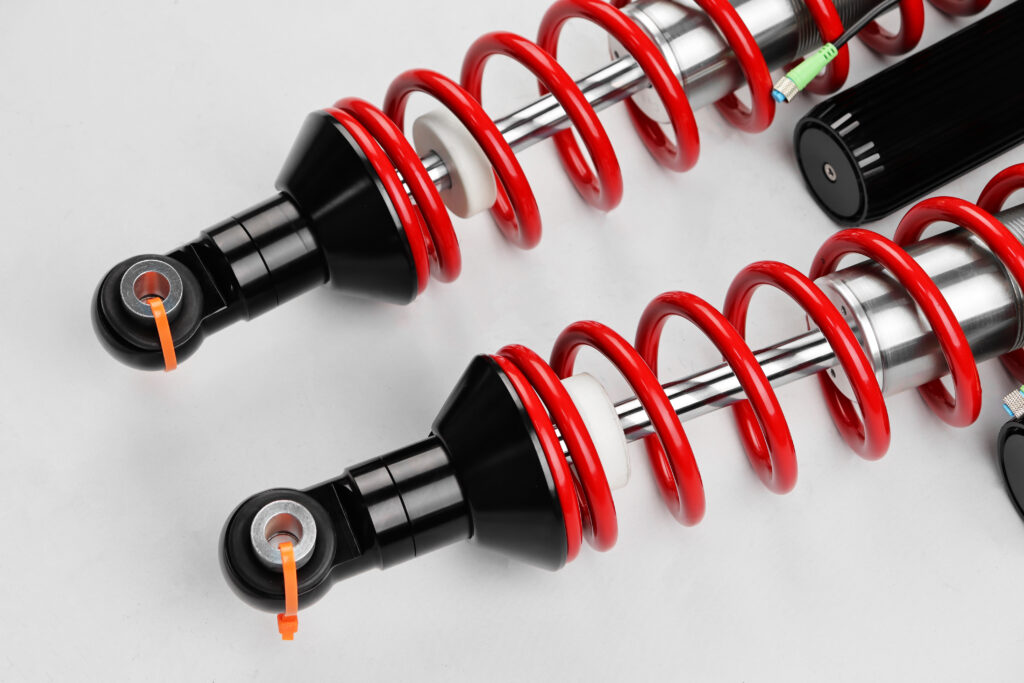
Custom Adjustable Shock Solutions for OEMs and Distributors
For B2B buyers, especially OEMs, auto parts wholesalers, and off-road performance brands, the ability to offer custom solutions is a game-changer. Custom adjustable shocks allow companies to differentiate themselves, cater to niche markets, and provide tailored vehicle handling based on unique user requirements.
Why Custom Adjustable Shocks Are in Demand
As the automotive aftermarket and off-road racing scenes continue to evolve, vehicle owners are demanding more than just “fitment”—they want performance personalization. This trend has created a significant opportunity for businesses sourcing custom shock absorbers that match their brand’s identity and specific vehicle requirements.
Key Drivers of Custom Demand:
- Vehicle-specific performance upgrades (Jeep, Toyota, Ford Raptor, etc.)
- Branded suspension kits for off-road retailers
- Private label programs for auto parts distributors
- Motorsport teams requiring precise tuning
- RV manufacturers seeking comfort-tuned shocks for various gross vehicle weights
Customization Options for Adjustable Shocks
| Custom Feature | Description | Importance |
|---|---|---|
| Damping Profiles | Custom compression/rebound curves | Performance matching |
| Mounting Configurations | Eye-to-eye, pin, clevis, etc. | Platform compatibility |
| Shock Length & Stroke | Variable travel and length | Suspension geometry fit |
| Reservoir Type | Piggyback, remote, or internal | Heat dissipation performance |
| Branding Options | Laser-etched logos, custom colors | Private label appeal |
| Seal & Boot Materials | For dust, water, chemical resistance | Longevity and reliability |
G·SAI: A Leader in Custom Adjustable Shock Solutions
G·SAI has become the go-to manufacturer for custom adjustable shock absorbers in China. Backed by 17 years of technical expertise, their chief engineer Cai Xianyun leads a team that develops high-performance, application-specific shock systems for:
- Baja and Dakar off-road racing teams
- RV chassis builders requiring stability on highways
- Private-label performance part retailers
- Global OEM partnerships
- Heavy-duty and fleet vehicles
What Makes G·SAI Different?
- Advanced R&D Capabilities: In-house simulation lab and vehicle testing platform
- Flexible Production: Small batch to mass production
- One-on-One Engineering Support: Direct collaboration with your technical team
- Full Branding Services: Packaging, product marking, and marketing materials
“We don’t just sell shocks—we engineer solutions tailored to your vehicle, market, and performance goals.” – Cai Xianyun, Chief Engineer at G·SAI
If you’re a distributor or OEM looking for custom shock absorbers with OEM-level quality and flexible production capacity, explore G·SAI’s custom shock manufacturing capabilities.
Top 5 Adjustable Shock Manufacturers for Off-Road and Racing Vehicles in 2025
For businesses sourcing adjustable shocks, choosing the right manufacturer can mean the difference between product returns and customer loyalty. Below is a curated list of the top 5 global manufacturers to consider for OEM partnerships, bulk procurement, and private label programs in 2025.
1. G·SAI (China)
Best for: Custom Engineering, Off-Road Racing, RV Applications, OEM Integration
- Location: China
- Specialties: Adjustable shocks for off-road, RVs, and racing vehicles
- Production Capabilities: CNC workshop, rapid prototyping, small-to-large batch
- Competitive Edge: One-on-one engineering support, vehicle-specific tuning
- Ideal For: Distributors, OEMs, and motorsport teams seeking tailor-made solutions
📌 Learn more about G·SAI’s shock absorber manufacturing
2. Fox Racing Shox (USA)
Best for: High-End Racing and Off-Road Applications
- Location: USA
- Specialties: Racing shocks for trucks, UTVs, and mountain bikes
- Known For: Advanced internal bypass technology and desert racing pedigree
- Ideal For: High-performance off-road retailers and racing teams
3. Bilstein (Germany)
Best for: OEM-Level Performance and Street Handling
- Location: Germany
- Specialties: Monotube adjustable shocks for sports cars and luxury vehicles
- Known For: OE partnerships with BMW, Mercedes-Benz, and Porsche
- Ideal For: European OEM brands and premium aftermarket distributors
4. King Off-Road Racing Shocks (USA)
Best for: Off-Road Racing and Custom Builds
- Location: USA
- Specialties: Adjustable shocks with remote reservoirs
- Known For: Custom valving and rebuildable designs
- Ideal For: Desert racing teams and off-road conversion shops
5. Ohlins (Sweden)
Best for: Motorsports and Precision Tuning
- Location: Sweden
- Specialties: Adjustable coilovers for motorcycles, cars, and racing
- Known For: High-end performance and electronic damping control
- Ideal For: Track-focused vehicle tuners and racing OEMs
| Manufacturer | Region | Strength | Ideal Buyer |
|---|---|---|---|
| G·SAI | China | Custom engineering & off-road racing | OEMs, wholesalers, racers |
| Fox | USA | Off-road racing performance | Performance retailers |
| Bilstein | Germany | OEM-grade street performance | Car manufacturers, luxury tuners |
| King | USA | High-travel off-road performance | Rock crawlers, desert racers |
| Ohlins | Sweden | Precision motorsports tuning | Race teams, performance brands |
If your business needs a reliable, customizable, and high-performance shock absorber partner in China, G·SAI is the best choice for durability, scalability, and engineering depth. Contact G·SAI to discuss your sourcing needs.
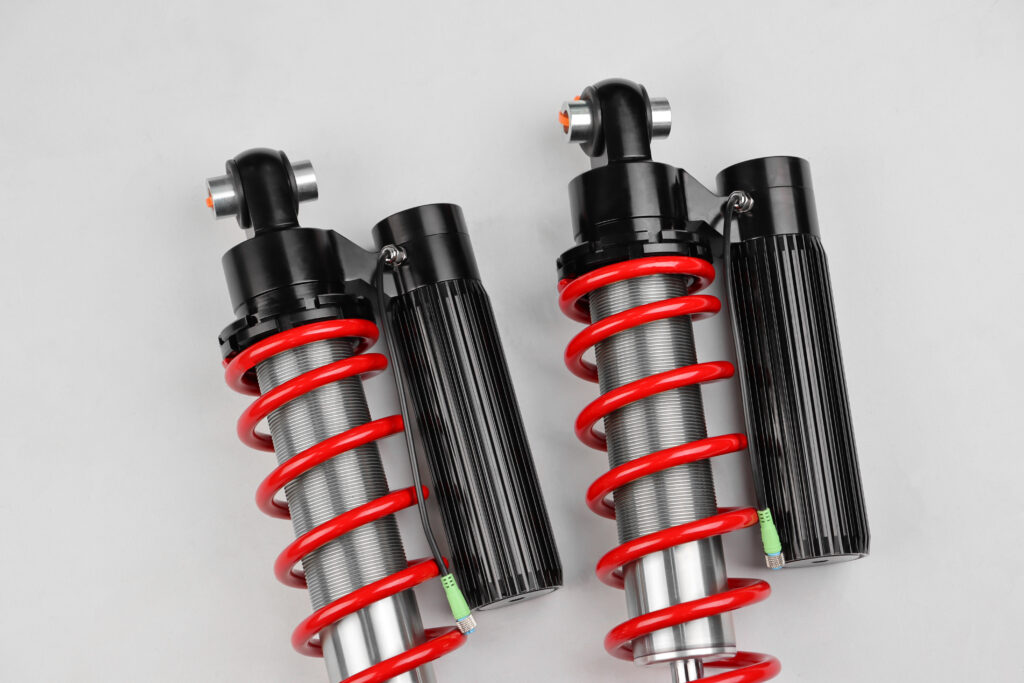
FAQ: Everything B2B Buyers Need to Know About Adjustable Shock Absorbers
Q1: What’s the minimum order quantity (MOQ) for wholesale adjustable shocks?
G·SAI offers flexible MOQs depending on whether you’re choosing from their existing product line or requesting a custom solution. For standard items, the MOQ is generally low, making it ideal for small distributors or testing new markets.
Q2: Can adjustable shocks be rebranded for my private label?
Yes. Many manufacturers—including G·SAI—offer private label services, allowing you to apply your brand logo, packaging, and even custom damping profiles tailored to your target audience.
Q3: What’s the difference between compression and rebound adjustability?
- Compression adjustment controls how fast the shock compresses when hitting a bump.
- Rebound adjustment controls how fast the shock extends back after compression.
Both are important for tuning vehicle handling and comfort.
Q4: How long does it take to manufacture a custom shock solution?
Lead times vary based on complexity. G·SAI typically delivers custom prototypes within 3-4 weeks, with production batches completed in 30-45 days depending on volume and customization level.
Q5: Are adjustable shocks suitable for electric vehicles (EVs)?
Yes. In fact, semi-active adjustable shocks are ideal for EVs due to their weight and dynamic handling needs. G·SAI is already developing EV-specific solutions with optimized damping and heat dissipation.
Q6: What kind of after-sales support is available?
Leading suppliers like G·SAI offer:
- One-on-one engineering support
- Performance tuning consultation
- Dealer and installer training
- Warranty and part replacement services
Explore G·SAI’s global support and training capabilities
Final Thoughts
Adjustable shock absorbers are more than just a performance upgrade—they’re a strategic product for wholesalers, OEMs, and performance brands looking to serve a demanding, high-margin market. Whether you need off-road racing dampers, RV stability solutions, or private-label adjustable shocks, partnering with the right manufacturer is key.
G·SAI stands out as the most reliable and innovative adjustable shock manufacturer in China, offering complete customization, advanced R&D, and dedicated B2B support.
📩 Ready to elevate your product line? Contact G·SAI to start your custom shock absorber journey today.
Additional FAQs on Adjustable Shocks (B2B)
- Q: What’s the fastest way for installers to baseline adjustable shocks after fitment?
A: Start at mid-clicks on both compression and rebound, verify ride height and corner weights, then run a short loop and adjust in 2–3 click steps: add rebound to control oscillation, add high-speed compression for big-hit control, and reduce low-speed compression if steering feels “darty.” - Q: How do adjustable shocks integrate with ADAS and EV platforms?
A: Maintain OEM ride height targets, recover caster/camber with UCAs or links, and perform post-install ADAS calibration. For EVs, specify rebound-biased valving and larger piston areas to manage mass; ensure CAN-enabled kits provide stable damping maps for ESC/ACC. - Q: When should B2B buyers choose internal bypass vs. external bypass adjustable shocks?
A: Internal bypass offers OE-like packaging and quieter operation for dual-use vehicles; external bypass provides wider, tool-free tuning windows for desert racing and heavy whoops where heat and stroke control are extreme. - Q: What KPIs prove my adjustable shocks are tuned correctly?
A: Track vertical acceleration RMS, suspension travel usage distribution (avoid frequent top/bottom-outs), tire temperature spread, ABS/ESC event rate per 1,000 km, and driver NPS. Revisit dyno curves hot (≥110°C) to confirm field feel matches lab data. - Q: How often should adjustable shocks be serviced in harsh use?
A: Racing: inspect each event, rebuild 40–80 hours; overlanding/fleets: 20–30k km; mixed-use: 30–50k km. Re-dyno after any oil, seal, or valving change to ensure clicker maps still align with targets.
2025 Industry Trends: Adjustable Shocks
- EV-ready adjustable damping: Rebound-biased maps, higher-flow pistons, and high-VI oils to stabilize heavy curb masses.
- Temperature-transparent specs: More vendors publish cold (≤−20°C) and hot (110–130°C) force–velocity curves tied to click positions.
- Position-sensitive + electronic hybrids: Internal bypass paired with electronically controlled compression enters mid-market.
- QR-linked documentation: Batch-level dyno CSVs, clicker-to-force maps, torque-at-ride-height SOPs reduce comebacks.
- Telematics-driven tuning: Fleets and teams optimize click settings via vertical accel RMS and ESC/ABS event analytics.
Adoption and Performance Metrics (2023–2025)
| Metric | 2023 | 2024 | 2025 (est.) | Notes/Source |
|---|---|---|---|---|
| Adjustable kits with cold/hot dyno maps published | 19% | 28% | 41% | SAE/Catalog audits |
| Internal bypass + electronic compression offerings | 11% | 17% | 26% | Product announcements |
| Dealer networks using QR-linked clicker maps/SOPs | 18% | 27% | 39% | Distributor programs |
| EV-specific adjustable shock SKUs in catalogs | 9% | 15% | 25% | OEM/aftermarket data |
| Fleets tracking vertical accel RMS for tuning | 14% | 22% | 34% | Telematics providers |
References: SAE Technical Papers (https://www.sae.org/), SEMA Market Research (https://www.sema.org/research), Racecar Engineering (https://www.racecar-engineering.com/), Geotab (https://www.geotab.com/), ASTM D445/D2270 (https://www.astm.org/)
Latest Research Cases
Case Study 1: Semi-Active Adjustable Shocks Stabilize EV Support SUVs (2025)
Background: An EV support fleet reported porpoising and variable stability on mixed desert/highway routes.
Solution: Installed semi-active adjustable shocks with rebound-biased base valving; published cold/hot dyno maps and QR-linked clicker presets for payload states.
Results: Vertical accel RMS −16%; ESC interventions −14%; driver NPS +19% over 90 days.
Case Study 2: Rally Team Speeds Setup Using QR Clicker Maps (2024)
Background: A privateer rally team lost time making onsite adjustments between gravel and tarmac stages.
Solution: Adopted remote-reservoir adjustable shocks with predefined stage maps and QR-linked tuning playbooks; validated at 20°C and 115°C on dyno.
Results: Stage turnaround time −22%; tire temperature delta −11%; SS consistency improved (time variance −1.4%).
Expert Opinions
- Dr. Thomas D. Gillespie, Vehicle Dynamics Author: “Judge adjustable shocks by temperature-consistent force maps and the clarity of clicker-to-force translation—not just the number of clicks.”
- Stephanie Brinley, Principal Analyst, S&P Global Mobility: “EV mass shifts demand toward rebound control and thermal robustness; suppliers that publish EV-specific adjustable damping data will win B2B trust.”
- Dave Polke, ASE Master/L1 Technician and Trainer: “Most setup complaints are installation or geometry. Torque at ride height, align under load, then tune clicks in small steps with data, not guesswork.”
Practical Tools and Resources
- SAE Mobilus (adjustable damping, semi-active control studies): https://www.sae.org/
- Racecar Engineering (shock dyno interpretation, bypass tuning): https://www.racecar-engineering.com/
- Geotab (telematics KPIs for tuning validation): https://www.geotab.com/
- Hunter Engineering (ADAS calibration and loaded alignment): https://www.hunter.com/
- ASTM D445/D2270 (oil viscosity/VI standards): https://www.astm.org/
- Benchmark specs: https://www.ridefox.com/, https://www.bilstein.com/, https://kingshocks.com/
Last updated: 2025-10-09
Changelog: Added 5 B2B-targeted FAQs on baselining, ADAS/EV integration, bypass selection, KPIs, and service intervals; 2025 trends with adoption/performance table; two recent case studies (EV semi-active fleet, rally QR maps); expert viewpoints; practical resources with authoritative links
Next review date & triggers: 2026-03-31 or earlier if SAE issues new temperature-dependent adjustable damper standards, major OEMs publish EV-specific rebound guidance, or telematics KPI definitions for suspension tuning are updated

